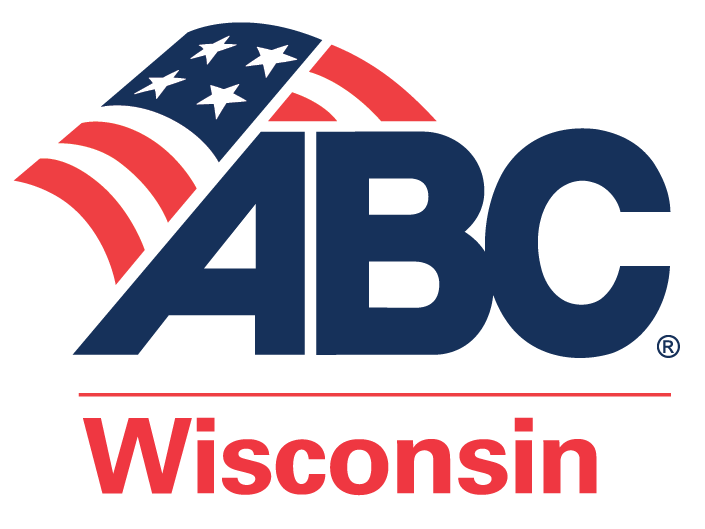Key deadlines include:
- December 5, 2021: Employers must: (1) collect each employee’s vaccination status; (2) require unvaccinated employees to wear masks; (3) educate employees on and promote the benefits of the COVID-19 vaccine; and (4) require employees who are COVID-19 positive to quarantine and set protocols for dealing with the same. (Note: these actions should begin as soon as possible, if not already in place).
- January 4, 2022: Employers must begin testing unvaccinated employees weekly. (Note: employers are not required to pay for testing[1].)
OSHA has stated, the purpose of the ETS is to “establish minimum vaccination, vaccination verification, face covering, quarantine, and testing requirements to address the grave danger of COVID-19 in the workplace.” Further, the ETS is intended to preempt any state or local requirement that bans or limits an employer’s authority to require vaccinations, face coverings, or testing. The preamble specifically states that “[t]o avoid ambiguity, OSHA has stated expressly that it intends this ETS to preempt all State and local workplace requirements that ‘relate’ to these issues, except pursuant to a State [OSHA] Plan.” (See State OSHA Plans Below.)
Am I a Covered Employer? The 100 Employee Threshold
The ETS applies to all employers with a total of 100 or more employees at any time the ETS is in effect. The following are examples of when employees would count towards this 100‑employee threshold:
- For a single corporate entity with multiple locations – All employees at all locations are counted to meet the 100-employee threshold.
- For a franchisor-franchisee relationship where each franchise location is independently owned and operated – The franchisor and franchisees are considered separate entities. The franchisee may count its employees separately from the franchisor.
- Two or more related entities may be a single employer for OSH Act purposes if they handle safety matters as one company, in which case the employees of all entities making up the integrated single employer are counted to meet the 100-employee threshold. Note: This test appears different in focus than the traditional integrated employer analysis. Since this is a somewhat new concept there is little guidance at this point on how it will be interpreted.
- For employees of a staffing agency placed at a host employer location – Only the staffing agency counts those jointly employed workers for purposes of the 100‑employee threshold.
- For a typical multi-employer worksite (e.g., a construction site) – Each company represented (the host employer, the general contractor, and each subcontractor) counts its own employees separately. The host employer and general contractor do not need to count the total number of workers at each site. But each employer must count its own total number of employees regardless of where the employees report to work. For example, if a general contractor has more than 100 employees spread out over multiple sites, that general contractor employer is covered even if it does not have 100 or more employees present at any one worksite.
When counting employees towards this threshold, employers are not required to include independent contractors or leased employees.
Further, employers determine whether they fall within the scope of the ETS based on the number of employees they have as of the effective date of the ETS (November 5, 2021). However, if the employer has less than 100 employees prior to the effective date, but then increases above 100 employees, the employer must come into compliance at that point, and remain in compliance for the remainder of the 6-month duration of the ETS.
The ETS does not apply to workplaces covered under the Safer Federal Workforce Task Force COVID-19 Workplace Safety: Guidance for Federal Contractors and Subcontractors, which is covered by this Michael Best Alert. Further the ETS does cover employees who provide healthcare services and healthcare support services. Healthcare employees are covered by a separate rule issued by the Centers for Medicare and Medicaid Services, which is covered by this Michael Best alert.
What if my Company is Located in a State with its Own State OSHA Plan?
States carrying their own OSHA state plan are required to issue a standard at least as strict as the standard under the federal ETS. California has already enacted such a standard. Some states will quickly follow California’s lead in implementing their own standard if they choose to use the same deadlines as federal OSHA, while other states may wait the full 30 days, giving workplaces in such states extra time to comply with the ETS.
I am a Covered Employer, but do the ETS Requirements Apply to All of My Employees? Remote Employees and Exclusively Outdoor Employees
The ETS will not apply to employees of a covered employer who do not report to a workplace where other individuals, such as co-workers or customers are present, who work remotely from home, or who work exclusively outdoors.
In the case of an employee who works remotely from home, if the employee switches back and forth between teleworking and working in a setting where other people are present (such as an office), the employee would be covered by the ETS.
In the case of an employee who works outdoors, the employee is only covered if they work exclusively outdoors. Thus, similar to an employee working remotely from home, if an employee spends more than a de minimis time indoors, the employee would be covered by the ETS. (De minimis is not defined, but it is probably measured as less than 15 minutes – the cumulative amount of time which constitutes a close contact in a 24-hour period for purposes of contact tracing).
When Does the ETS Standard Go into Effect? Dates
While the testing related requirements of the ETS officially go into effect on January 4, 2022, employers will need to prepare immediately to meet all of the other provisions by December 5, 2021. Because the testing will apply to any employee not fully vaccinated by January 4, 2022, any employee who has not supplied proof of full vaccination by then, will have to be tested weekly after that date until fully vaccinated. It takes most of that 60-day period between now and then to become fully vaccinated. If your policy is going to be a vaccination mandate (no testing), vaccination requirements must start now. Even if you plan to allow a testing alternative, planning will need to start immediately to ascertain who will be tested and how you will manage and document that testing.
December 5 Deadlines – Provisions of the ETS, which include employers providing paid‑time off for employees to receive and recover from any side effects of the COVID-19 vaccine and requiring any unvaccinated employees to wear face coverings or face masks, are effective December 5, 2021. Employers are also required to document the vaccination status of employees by December 5, 2021. And employers must quarantine employees who test positive in accordance with CDC guidance on or after December 5, 2021. (This requirement should be followed already, and virtually all employers know this, but after December 5, 2021 you can be issued a citation under the standard for not doing so).
What are the Requirements of the ETS?
The ETS requires covered employers to implement a written policy which either: (a) requires employees to be vaccinated for COVID-19 (mandatory vaccine policy); or (b) permits employees to choose between vaccination or weekly testing for COVID-19 and masking for unvaccinated employees (alternate policy). The standard encourages employers to implement a mandatory vaccine policy, but allows the alternative testing and masking approach.
Employers must take steps to determine the vaccination status of employees, maintain proof of vaccination for employees, and ensure that unvaccinated employees are either prevented from entering the workplace (in the case of mandatory vaccine policies) or required to submit a negative test weekly and wear masks. The ETS addresses what information employers must share with employees; what types of records employers must maintain (and how); and what type of response employers must provide in the case of a positive test, hospitalization, or death from COVID-19. Most notably, the ETS does not require employers to pay for employee testing or face coverings, unless required by other laws (e.g. including disability laws, religious protections, pregnancy protections, and state laws), regulations, collective bargaining agreements, or other collectively negotiated agreements. Each of these requirements is described in greater detail below.
1. Written Vaccine Policy (by December 5) What should it include?
Covered employers must implement a written mandatory vaccination policy, unless the employer chooses to implement an alternate policy, whereby employees are permitted to choose between being vaccinated or being tested on a weekly basis and wearing a mask. The written policy should clearly state which is being implemented. A “mandatory vaccination policy” means that every employee must be fully vaccinated, including vaccination of all new employees “as soon as practicable,” unless the employee at issue has a medical contraindication to the vaccine, is required to delay vaccination due to medical necessity, or is legally entitled to a reasonable accommodation under federal civil rights laws because of a disability or sincerely held religious belief, practice, or observance that conflicts with the vaccine requirement.
The Mandatory Policy OSHA states in the text accompanying the standard the following additional elements that should be included in a written mandatory vaccination policy: requirements for COVID-19 vaccination; applicable exclusions from the written policy (e.g., medical contraindications, medical necessity requiring delay in vaccination, or reasonable accommodations for workers with disabilities or sincerely held religious beliefs); information on determining an employee’s vaccination status and how this information will be collected as described in paragraph (e) of the standard; paid time and sick leave for vaccination purposes as described in paragraph (f) of the standard; the procedures they must follow to provide notice to the employer of a positive COVID-19 test or diagnosis of COVID-19 by a licensed healthcare provider; information on removal of COVID-19 positive employees from the workplace as described in paragraph (h) of the standard; information to be provided to employees as described in paragraph (j) of the standard including: any disciplinary action for employees who do not abide by the policy; the policy’s effective date; who the policy applies to; deadlines (e.g., for submitting vaccination records).
The Alternate Written policy (allowing a choice to test and wear a mask) must also address the following topics:
- Face Coverings and Respirators, including the acceptable types and limited exceptions (such as working alone with the door closed in an office with floor to ceiling walls, removal when eating or drinking) as specifically outlined in the ETS
- Covid-19 Vaccine Safety, Efficacy and Benefits by providing the document, “Key Things to Know About COVID-19 Vaccines,” available here.
- Anti-Discrimination and Retaliation under 29 CFR 1904.35(b)(1)(v)
- Criminal Penalties Associated with Knowingly Supplying False Statements or Documents under 18 U.S.C. and Section 17(g) of the OSH Act
- Temporary Suspension of Testing for Employees Following a Positive COVID-19 Test or Diagnosis (for a Policy with a Testing Option)
2. Educating Employees about the ETS Standard and Policy (by December 5)
Employers are required to inform employees about all the information described in the written policy section above. An employer must have a written policy, but, if the written policy does not contain all this information, it can be provided through email communications, printed fact sheets, or during a meeting. Employers may identify a point-of-contact for employees who have questions about the information provided. Further, the information must be provided in a language and at a literacy level the employee understands.
3. Identifying and Maintaining Proof of Vaccination Status (by December 5)
Covered employers will have to, determine employee vaccination status and obtain proof of vaccination status. Acceptable proof of vaccination under the ETS may include
- immunization records from a health care provider, pharmacy, public health, state or tribal immunization agency/system;
- medical records;
- COVID-19 Vaccination Record Card; or
- any other official documentation that identifies the date of administration and entity administering the vaccine.
If an employee is unable to provide any of the acceptable proof of vaccines, employers are permitted to accept an attestation of vaccination status, so long as the attestation certifies the information under specific language and knowledge of criminal penalties for providing false information (described in section 1 above). Further, the ETS notes that employees providing an attestation should still attempt to identify to the best of their ability the date of administration of the vaccine and entity that administered it. With respect to the possibility that employees may fabricate vaccination cards or provide false attestations, the preamble to the ETS notes that “while employers may not invite or facilitate fraud, the ETS does not require employers to monitor for or detect fraud.”
A roster of vaccinated and unvaccinated employees must also be maintained.
4. Supporting Employees in Obtaining the COVID-19 Vaccine (by December 5) Paid Leave
If an employee chooses (or is required) to get the COVID-19 vaccine, the employer must support the employee by providing both time for the employee to receive the vaccine and time for the employee to recover from the vaccine.
When the employee chooses to get the COVID-19 vaccine, the employer must provide a reasonable amount of time to an employee for each of the primary vaccination dose(s) and provide up to four hours of paid time, including travel time, at the employee’s regular rate of pay for this purpose. Employers are not obligated to reimburse employees for transportation costs, such as gas money, incurred to receive the vaccination. Further, because employers are required by the ETS to provide reasonable time for vaccination during work hours, if an employee chooses to receive a primary vaccination dose outside of work hours, employers are not required to grant paid time to the employee for the time spent receiving the vaccine during non-work hours (unless required by state law or a collective bargaining agreement). Importantly, the maximum of four (4) hours of paid time that employers must provide for the administration of each primary vaccination dose cannot be offset by any other leave that the employee has accrued, such as sick leave or vacation leave. Moreover, if an employee needs more than four hours to receive a primary vaccination dose, any additional time, as long as it is reasonable, would be considered unpaid but protected leave; the employee may use other leave time available to them, such as sick leave or vacation time, to cover the additional time needed to receive a vaccination dose that would otherwise be unpaid.
After the employee receives a primary vaccination dose, the employer must provide reasonable time and paid sick leave to recover from side effects experienced for each dose. If an employee already has accrued paid sick leave, employers may require the employee to use that paid sick leave when recovering from side effects. If employers only grant one type of leave, employers may require use of that leave for recovery purposes; however, if there are multiple types of leave available to the employee, such as sick leave and vacation leave, the employee may only be required to use sick leave for recovery purposes. Employees cannot be required to use advanced sick leave, to accrue negative sick leave, or to borrow against future sick leave to recover. Further, employers may set a cap on the amount of paid sick leave available to recover from any side effects, but the cap must be reasonable.
5. Testing Option (by January 4) – How to Structure it and Who Pays for it?
The Standard does not require employers to pay for vaccines. This decision was surprising, since OSHA often passes compliance costs to employers. But OSHA’s reasoning is to favor vaccines by creating an incentive to be vaccinated due to the cost of testing. The standard does not prohibit employers from paying for tests and recognizes that there are other laws that may shift the cost to the employer. This is a mandatory subject of bargaining in union settings unless there is a waiver of that obligation in the contract. Existing contracts may address this already.
State and federal laws governing disability accommodation require the employer to pay for accommodations and may shift the cost of testing to an employer in the case where the employee cannot be vaccinated due to a medical condition. The OSHA standard also cites religious accommodations and links to EEOC guidance. However, federal law concerning religious accommodation states that employers do not have to pay more than a de minimis cost for accommodations.
Some state laws prohibit an employer from charging for mandatory tests. If employees will be required to pay for weekly tests, it is best to issue a policy that requires a vaccine, with tests (and masking) allowed only by accommodation requests. The difference between the mandatory policy and the alternate policy under this approach, is that the alternate policy is more liberal on what is an acceptable basis for an accommodation. But in both policies, employees do not simply declare they will not be vaccinated. They must request an accommodation, which is documented. By approaching it in this manner, the employer makes it clear that the test is not a requirement, but an accommodation, which is especially important depending on whether your jurisdiction prohibits an employer from requiring a test without paying for it. Also, by determining the basis for the accommodation, the employer is not later surprised by a claim that the employer violated a legal duty to pay for a required accommodation.
6. What Testing Is Allowed
The testing that is allowed is any FDA approved testing, even testing that is at the Emergency Use Authorizations (EUA) stage. However, the testing must be performed in accordance with the authorization instructions and may not be both self-administered and self-proctored. The employer may watch the employee administer his/her own test to meet the standard.
7. Enforcement of Safeguards for Unvaccinated Employees and Screening of Positive Cases
Covered employers are required to enforce protocols for unvaccinated employees (for those employers that permit unvaccinated employees with testing or by other accommodation) and for screening positive COVID-19 cases from the workplace. Unvaccinated employees may not be permitted in the workplace without providing a negative COVID-19 test result from within 7 days prior to the employee’s entrance into the workplace. Employers must also ensure that unvaccinated individuals permitted in the workplace wear acceptable masks or face coverings at all times when indoors or in a vehicle occupied by another employee, with limited exceptions. Further, if an employee tests positive for COVID-19, he or she may not be permitted in the workplace, regardless of vaccination status. Importantly, the ETS does not require that employers pay employees for time off from work due COVID-19 infection, although such leave may be required by other state and local laws or regulations. Employers must temporarily suspend testing of an employee who tested positive for COVID-19 for a period of 90 days following the date of a positive test or diagnosis. An employee is permitted to return to work when the criteria from the CDC’s “Isolation Guidance” are met.
8. Reporting In-Patient Hospitalizations or Deaths due to Work-Related COVID-19 Exposure
The ETS changes the rules regarding reporting COVID-19 hospitalizations or deaths. The time for reporting – 8 hours in the case of death or 24 hours in the case of in-patient hospitalization – is the same as required for other injuries and illnesses. But the measurement for when those time clocks start for COVID-19 cases, has changed. In the case of a death, that must be reported within 8 hours of the time the employer learned of the death. Previously, no report had to be made if the death did not occur within 30 days of the exposure. That 30-day limit is removed under the ETS.
In the case of a work-related COVID-19 in-patient hospitalization, the prior rule was that it had to be reported if the employee was hospitalized within 24 hours of the exposure. But since it takes longer than 24 hours to get sick after exposure, those cases never had to be reported. Starting December 5, once the employer learns of an inpatient COVID-19 hospitalization that arose from workplace exposure, the employer has 24 hours to report it to OSHA.
9. Maintaining Records of Vaccination Status and Responding to Record Requests (by December 5)
For vaccinated employees, employers must maintain a record of each employee’s vaccination status, preserve acceptable proof of vaccination, and maintain a roster of each employee’s vaccination status. For unvaccinated employees, employers must maintain a record of each test result provided by each employee. Regardless of whether the employee is vaccinated or unvaccinated, any records provided to the employer are considered medical records and must be maintained in accordance with § 1910.1020; further, they may not be disclosed except as required or authorized by the ETS or other federal law. The records are not subject to the record retention requirements of § 1910.1020(d)(1)(i), but they must be maintained while the ETS is in effect.
If requested, employers must make available for examination and copying individual COVID-19 vaccine documentation and any COVID-19 test results for a particular employee to that employee and anyone having written authorized consent of that employee by the end of the next business day. Further, if requested, employers must make available to the requester the aggregate number of fully vaccinated employees at a workplace along with the total number of employees at that workplace by the end of the next business day.
If the requester is the Assistant Secretary, the employer must provide the employer’s written policy required by the ETS and the aggregate number of fully vaccinated employees at a workplace along with the total number of employees at that workplace within 4 hours of a request; further, the employer must provide all other records and documents required to be maintained by the ETS by the end of the next business day.
10. What Penalties Can be Issued for Violations?
Citations classified as “serious” carry a penalty of $13,653 per violation. Citations for failure to abate can carry a penalty of $13,653 per day beyond the abatement date. Willful citations can cost as much as $136,532 per violation. Where there is a death or penalties exceed $40,000 OSHA is likely to issue a press release to thousands of media outlets. Each one of the areas discussed above could lead to a separate penalty.
Will this ETS Be Challenged?
Yes. Several lawsuits have already been filed challenging the ETS and requesting that the courts enjoin it. More will likely follow. It is very likely that the case will reach the Supreme Court. However, given the fairly tight timeline provided to implement the ETS requirements, and the uncertainty of how any litigation will play out, it is prudent to begin compliance preparations immediately.
For additional resources and tools to allow employers to act swiftly in evolving landscape of the COVID-19 vaccine, sample plans and policies, a state-by-state tracker of applicable legal regulations and a broad analysis of laws implicated by the COVID-19 Vaccine and vaccine mandates, consider purchasing Michael Best’s Vaccination Policy Toolkit.
[1]Payment for testing may be required under some state laws and if testing is provided as an accommodation for a disability which makes an employee unable to be vaccinated.
[2]The OSHA ETS describes permissible testing and its administration of permissible testing here.











